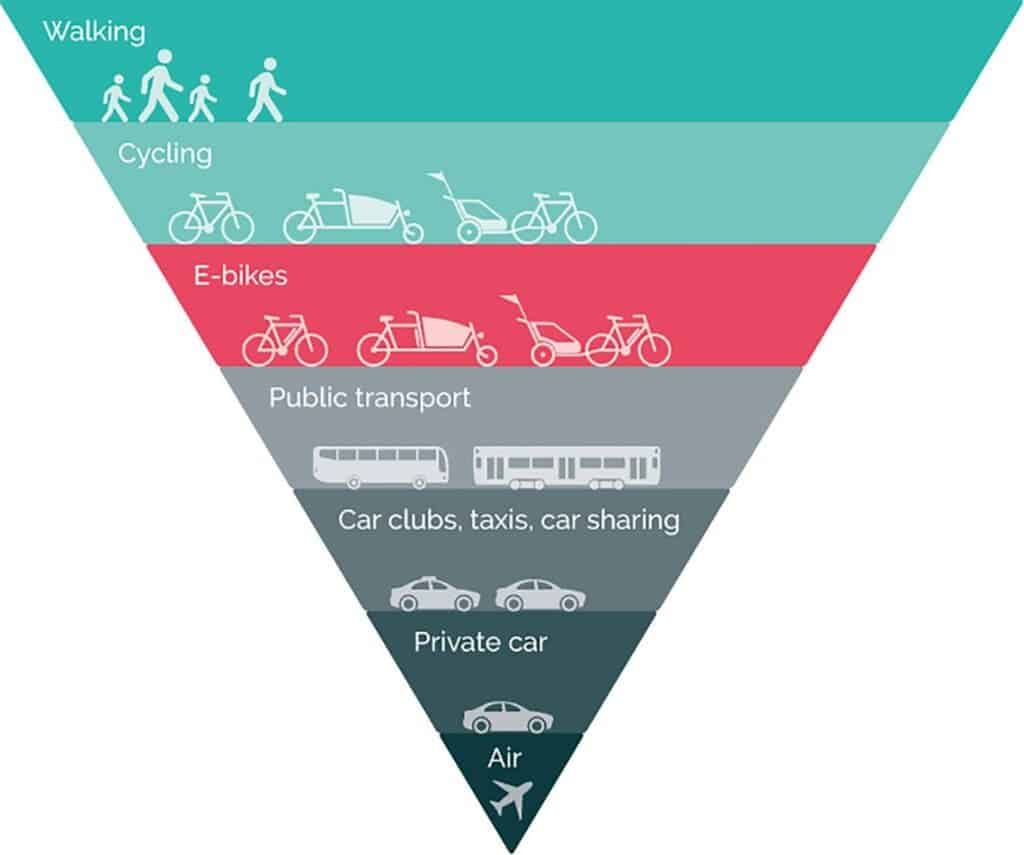It’s one of the most promising ways to reduce our emissions, and it’s very simple: cycling, e-biking, or just walking would significantly lower people’s individual carbon footprint and help tackle the world’s climate crisis, according to a new study.

The transport sector is usually at the center of any debate regarding climate change, mainly because of its overwhelming reliance on fossil fuels by its motorized forms. We all want to get from A to B quickly, and for the longest time, this could be done only using fossil fuels. Sure, electric cars are already here and they can be a game changer, but there’s something else you can do. Something simpler.
In urbanized areas especially, the distances we travel are often not that long, and you don’t always need the car — the pandemic has clearly shown that with a significant shift in travel. People started cycling or walking more as public transportation was discouraged by authorities. A further shift to active travel could reduce CO2 emissions from road transport faster than technological measures alone.
A group of researchers at Oxford University wanted to investigate to what extent changes in active travel can be associated with changes in mobility-related carbon emissions from daily travel activity. They focused on seven European cities with different travel activity patterns across a wide range of urban contexts.
Over 10,000 participants from Antwerp (Belgium), Barcelona (Spain), London (UK), Orebro (Sweden), Rome (Italy), Vienna (Austria), and Zurich (Switzerland), entered the study. Through a questionnaire, they provided detailed information on their weekly travel behavior, daily travel activity, vehicle ownership, and socio-demographic characteristics.
Trip distances averaged 33.3 kilometers a day. While cycling and public transport were the most frequent transport modes among the participants, people traveled furthest by public transport and car — which makes sense. Transport mode usage was similar between sexes. The sample traveled an average of 3.6 trips per day, ranging from 2.9 trips per day in Rome to 4 trips per day in Antwerp.

Mobility-related lifecycle CO2 emissions totaled 2.8 kilograms of CO2 per day per person, the study showed. Driving a car or van made up the majority of these emissions. Direct emissions from all travel activity made up 70% of mobility-related lifecycle emissions. While travel to work or school produced the largest share of emissions, there were also contributions from social and recreational trips.
It boils down to this: driving (especially a big car) produces a lot of emission. If you want to reduce your emissions, that’s a great place to start. The findings showed that those who switch one trip per day from car driving to cycling or walking would reduce their carbon footprint by about 0.5 tons of CO2 over a year. if 10% of the population would do the same, then the emissions savings would be around 4% of lifecycle CO2 emissions from car travel.
The largest benefits from shifts from car to active travel would be for business, then social/recreational followed by commuting to work or place of education, the researchers argued. This may be partially explained by longer trip distances and lower occupancy rates for business travel. UN reports have shown top-income earners are largely to blame behind aviation emissions.
“A typical response to the climate crisis is to ‘do something’, such as planting more trees. While these are important and effective, they are neither sufficient nor fast enough to meet our ambitious climate targets,” lead researcher Christian Brand in a statement. “Doing more of a good thing combined with doing less of a bad thing—and doing it now is much more compliant with a ‘net zero’ pathway.”
The study was published in the journal Global Environmental Change.









